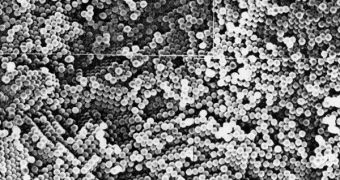Nanoparticles are among the most promising materials to be incorporated in the medical therapies of tomorrow. They can be constructed so as to carry vaccine molecules directly to the place of interest, or can be made to glow in certain wavelengths, evidencing various targets inside the human body for medical imaging technologies. However, at this point, it's still unclear exactly how these small particles would interact with some of the most important proteins and molecules inside the body. Finding out as much as possible about this issue was the goal of a new investigation, conducted by experts at the US National Institutes of Standards and Technology (NIST), PhysOrg reports.
Certain nanoparticles are already known to have an adverse effect on our bodies, but previous studies have yet to determine the physical cause of these negative side-effects. The investigation was focused on gold nanoparticles of various sizes, and on the responses they elicited from the immune system, or other bodily defense mechanisms, once injected into the bloodstream. The NIST group says that there are several issues confronting the field of medical nanotechnology today, and that more innovations are needed before any advancements can be put to large-scale use.
“Nanoparticles coated with proteins will generally alter their interaction with the body and the nanoparticles can be expected to induce a complementary change in protein chemical activity. The coating also can cause the nanoparticles to clump together in large aggregates, which can provoke a huge immune response. Of course, that’s something you want to avoid,” Jack Douglas, a materials scientist at NIST, and a member of the research team, says. Full details of the group's achievements appear in the December 18, 2009 issue of the respected scientific journal ACS Nano.
“Once the proteins stick to the nanoparticles, the optical properties of both the particles and the proteins change. Measuring these changes helps us quantify the stickiness of the nanoparticle for the proteins, the thickness of the adsorbed protein layer and the propensity of the particles to aggregate due to the presence of the protein layers,” the expert adds. A large number of microscopes and spectroscopy devices were used to track the nanoparticles, and to determine their interactions with each other, and with common proteins in the bloodstream. “The main thing is that interactions are largely set by the existence of the protein layer. You want to know something about these protein layers if you want to know what nanoparticles are going to do in the body,” the expert concludes.

 14 DAY TRIAL //
14 DAY TRIAL //